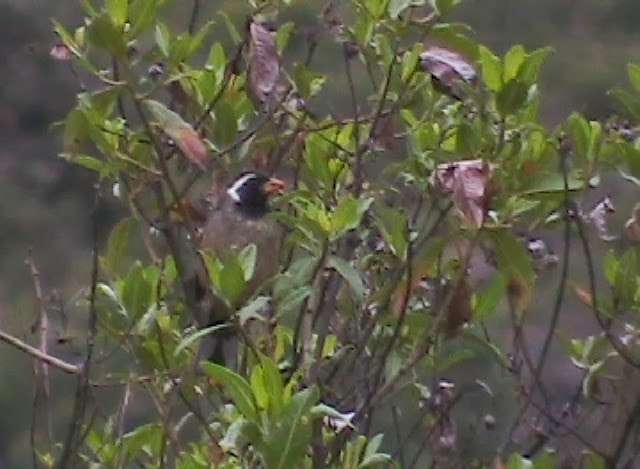Why go to Peru ?!?!
Life in North America had become so comfortable, modern, hygienic, hyperactive, expensive, over-regulated, and insulated from Earth-based wisdom. Even though we ate organic food, bicycled and hiked and gardened, we were caught up in the modern economic treadmill of work and consume; we were showing symptoms of "affluenza", an excess of material goods. Most people seem to just go with the tide, but we could see this is not a sustainable way to live.
But how do you break out of the culture you're surrounded by???
There comes a time to seek adventure, to leave behind the familiar, to venture out into the larger world...like the “outward bound" ship leaving its safe harbor, we saw our opportunity, and made a decision to go. Actually, we'd been talking about doing an immersion with our kids in Latin America, but we felt that Serena needed to be at least 6. Then, when Gary's teaching job suddenly ended, the time seemed right. Synchronistically, just then another Sunfield Farm (Waldorf) School family invited us to join their family (mom and two kids 10 and 12 yrs old) for a 6-month sojourn in Peru. The plan was for us to travel together, giving our kids a rich intercultural homeschool experience in an amazing land. It didn't take us long to convince ourselves that NOW was the time to go. So we said, sure, why not?! Some of our friends and kinfolk envied and applauded our decision, others thought us crazy.
Dreams and preparations
Quickly, we generated a formidable to-do list that nearly exhausted us, because it included not just preparing for Peru, but also moving out of our comfy home so that we could rent it out. Many big changes followed: we sold our beloved Toyota truck, and became a 1-car family again. We started "radical pruning", paring down the volume of stuff we’d accumulated over the years. Everything was triaged, resulting in selling/donating/gifting/tossing what we could, moving our keepsakes and treasures up into the attic. We advertised the house for rent, found great renters, got passports, plane tickets, travel insurance, money belts, acidophilus capsules, travel books and maps, bug repellent, etc. We emptied our closets and boxes and pulled together clothing for hot jungles and cool mountains, plus swimsuits and sun hats, sunscreen and bug juice, homeopathic remedies and first aid kits. It was exciting and gave us a focus. We practiced using Spanish at home and borrowed books about Peru.
Launching the adventure
After several months of increasingly painstaking planning, preparing, packing, perspiring, and paring down our stuff, we left our cozy home in Port Townsend for an amazing 6-month adventure. So many thanks to all our friends and family who helped!!!
Phase 1: Overland to California September 1-12, 2013
We started our travels with a 12-day, 1200-mile road trip to L.A. in our 1991 Toyota Corolla sedan, which we dubbed “Milagro”, Spanish for miracle. That little blue car somehow carried us to where we wanted to go without any mechanical issues (other than noisy windows and lack of a stereo), and she got good mileage to boot. Our plan was to leave the car at Gary’s mother’s home in Los Angeles, and fly to Peru. This allowed us to visit friends and family and favorite places along the way.
William stayed in PT for a couple more weeks with his dad, flying by himself to meet us in L.A. It worked out well since there wouldn’t have been room for him in the car anyway.
When we finally rolled out of the driveway of our Port Townsend home, Milagro was packed to the gills, including a newly-purchased top carrier filled with camping gear plus all our Peru luggage.
Along the way, we visited our family (Everett, Seattle, Olympia, Eugene), and friends, and some of our favorite places too--Jackson Wellsprings in Ashland, Mt. Shasta, Castle Lake, and the old growth redwood forest in Northern California. South of the redwoods, the weather heated up, and Milagro’s air conditioning didn’t offer much relief. But we found relief as we discovered swimming lakes, air conditioned health food stores, and the foggy Monterey Bay. We splurged on a hotel near Monterey, and the next day enjoyed the best fish tacos in a little Mexican restaurant. We even visited a Peruvian family living in Santa Barbara, getting some contacts and recommendations for our trip.
We also spent some wonderful time at a few of our favorite places, including Mt. Shasta, Castle Lake, and Grizzly Creek Redwoods in northern California. Twelve days after leaving Port Townsend, WA, we arrived were able to spend a few days with Grandma Barbara in Palos Verdes, a suburb of L.A., and left Milagro safely parked at her house for the winter.
Phase 2: On to South America
The four days in LA went fast and furious. We attempted to balance beach play with the rigors of packing, packing, and repacking. We all loved playing in the waves in southern California.
Finally the BIG DAY arrived, September 16th. Arising at 4:30am, we caught a van to LAX and before we knew it, we were flying from Los Angeles to Lima, Peru, (stopping to stretch our legs in Atlanta). We arrived in Lima at 10pm, but still it took another hour and a half to collect luggage, pass through customs, and get to our hotel. Fortunately, Gary had reserved a room for us at the economical Hostal Iquique in the Breña sector of Lima. The friendly staff sent a van to pick us up from the airport that first night. As we pushed our luggage out of the crowded baggage claim area, Joy glimpsed our driver holding up a sign that read Hostal Iquique, "Eduardo Berves"-- close enough, I suppose. Our tired heads hit the comfy pillows around midnight in Lima. Long first day!















































